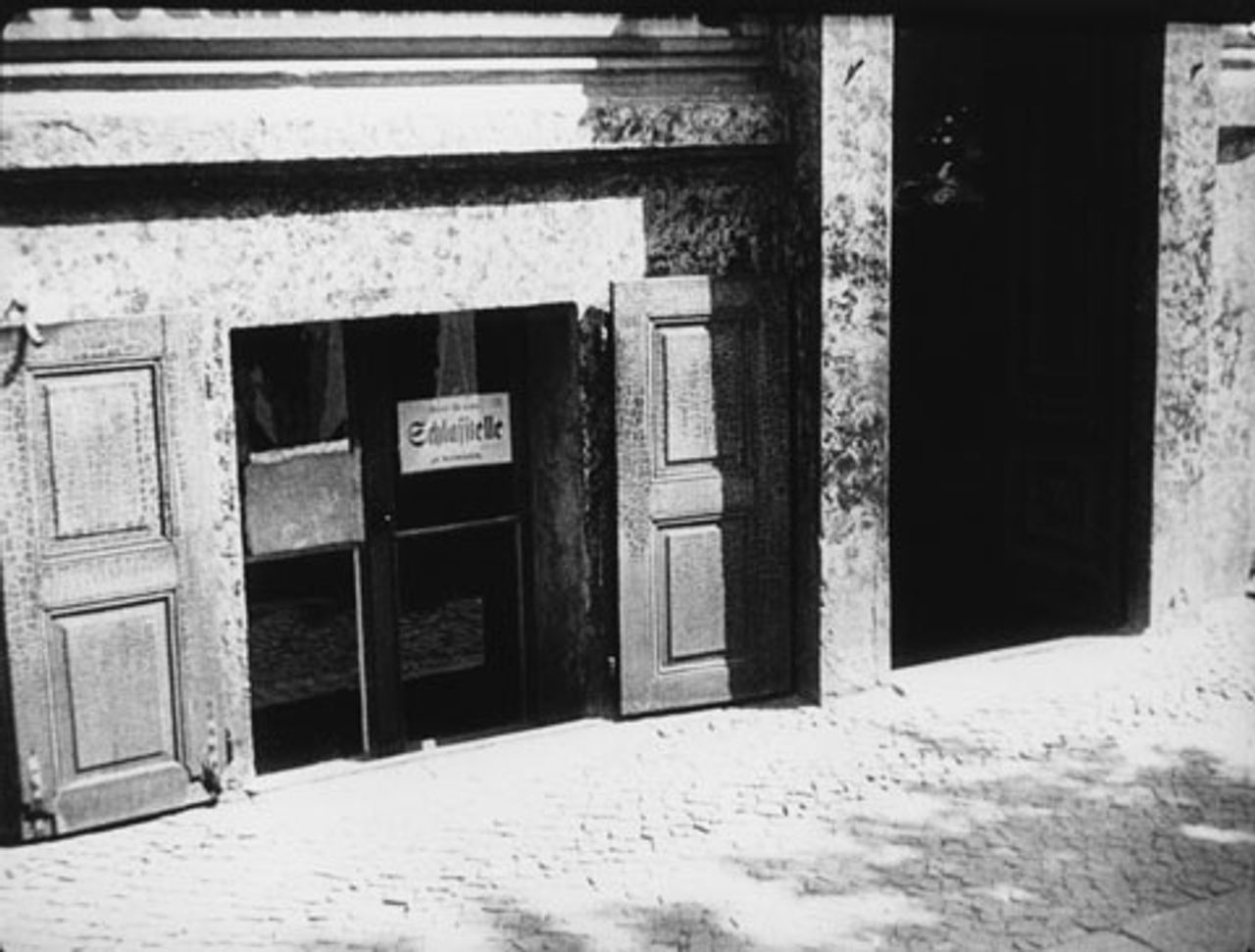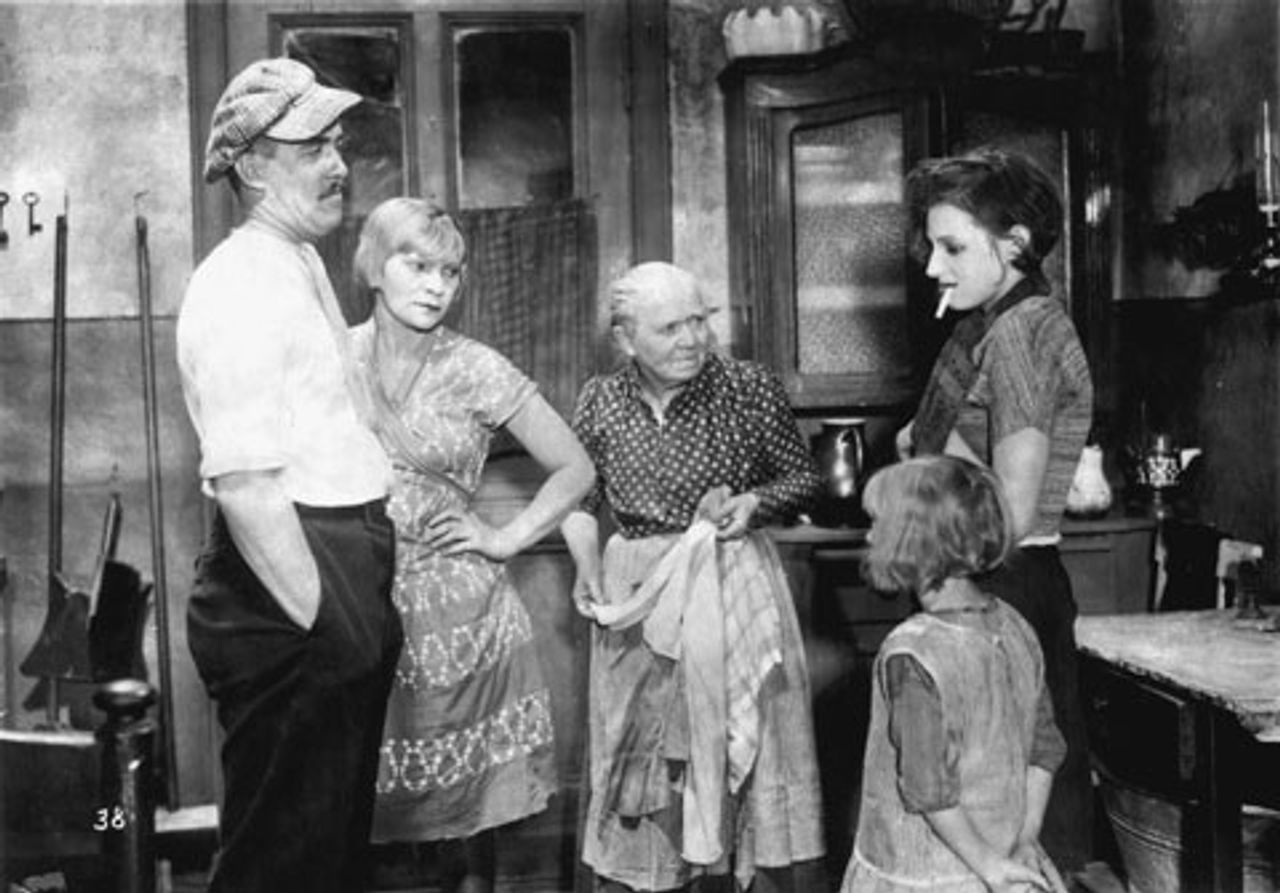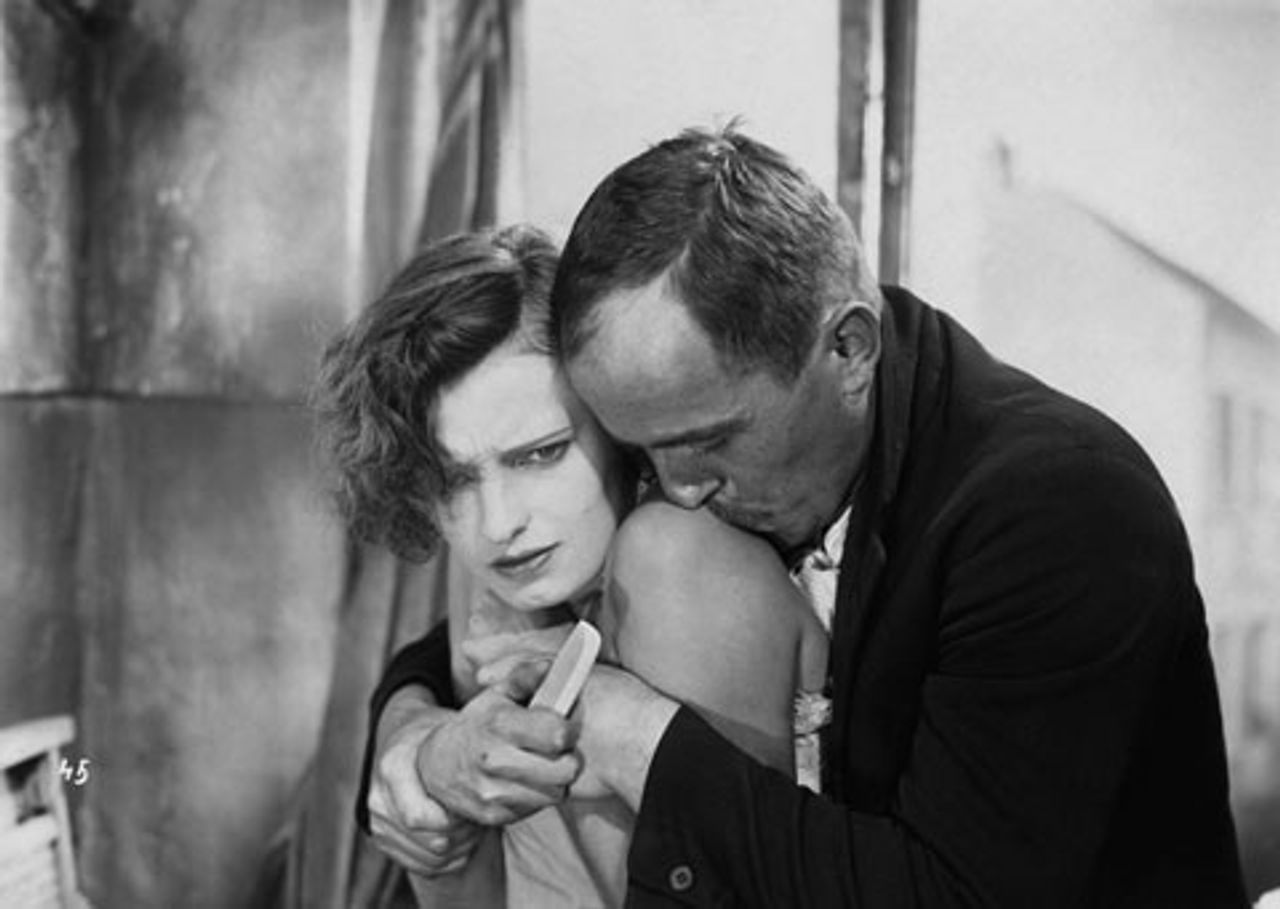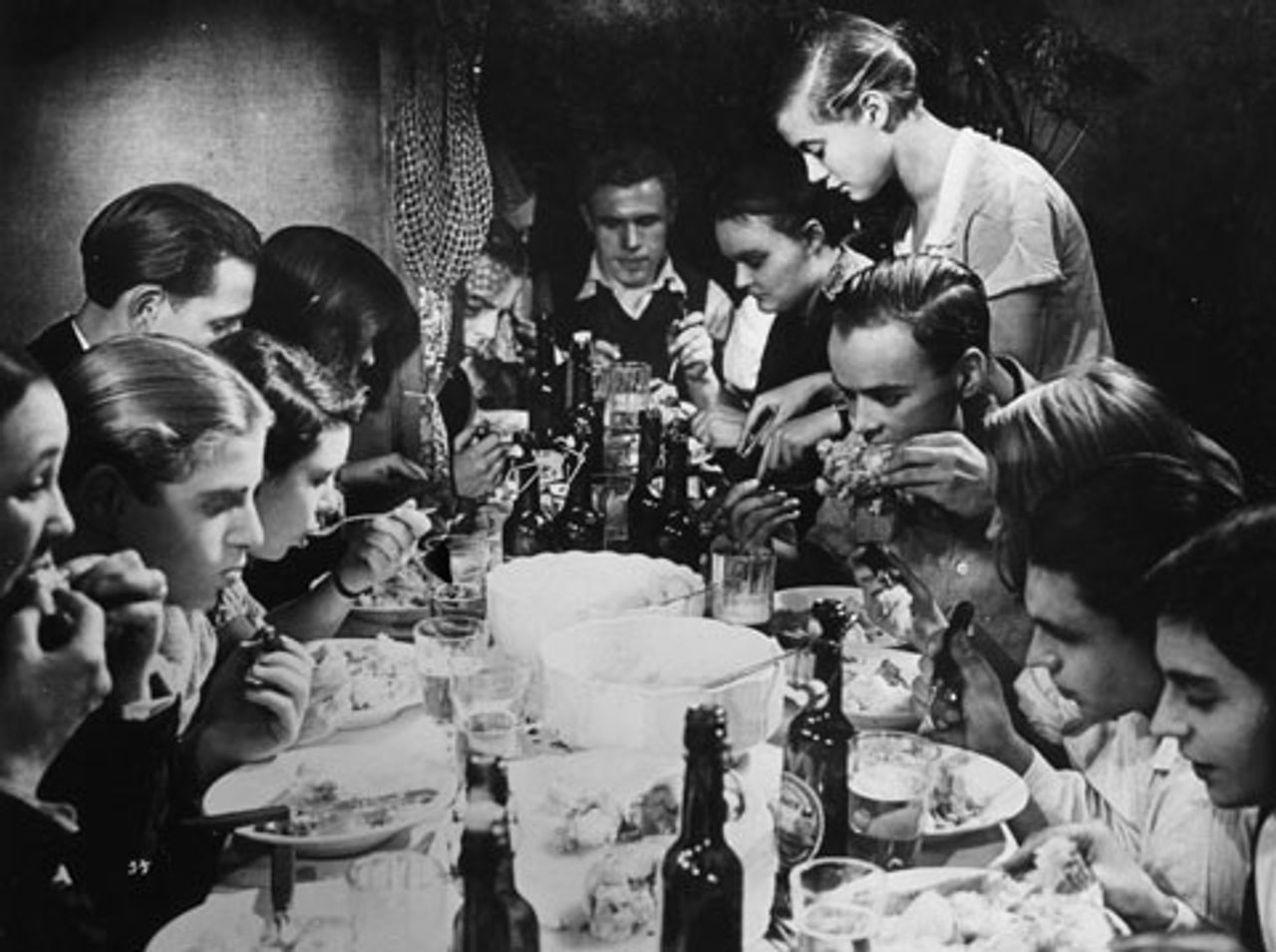This is the fifth of a series of articles on the recent Berlin film festival, the Berlinale, held February 9-19, 2012. Part 1 was posted February 24, Part 2 on February 29, Part 3 on March 6 and Part 4 on March 10.
This year’s retrospective, “The Red Dream Factory”, included a number of intriguing, if flawed, German films produced by the German-Soviet film company Mezhrabpom in the 1920s and 1930s. It should be borne in mind that the works produced by the German subsidiary, Prometheus, were made under difficult economic and artistic conditions.
Prometheus had constant financial problems. Additional difficulties resulted from the growing social and political crisis of the Weimar Republic and the Stalinization of the German Communist Party (KPD) under Ernst Thälmann. The policy of “social fascism” dictated by the Stalin bureaucracy in Moscow in 1929 identified the Social Democratic Party (SDP) as the main enemy of the working class and tragically served to isolate the party from broad masses of socialist-minded workers determined to fight fascism.
Like many KPD officials, the founder of Prometheus, Willi Münzenberg, had his reservations about the new party line, but nevertheless went on to defend Stalin’s policy in the media he controlled. Following the Hitler-Stalin pact of 1939, Münzenberg publicly denounced Stalin’s betrayal. In 1940 he was murdered in France, most probably by Stalinist assassins.
The Soviet Mezhrabpom films of the 1920s are characterised by a genuine sense of life and optimism, a far cry from the increasingly self-censored and empty efforts which were to follow in the next decade. Even in tragic moments in the earlier Soviet films one senses the impact and immediacy of everyday life. This confidence was based on the fact that the mass of the population had experienced a victorious revolution in 1917.
In Germany, on the other hand, the revolution had been bloodily suppressed in 1919—with the help of the SPD. The most experienced cadres of the newly formed Communist Party, Rosa Luxemburg and Karl Liebknecht, were murdered by reactionary forces in alliance with the social democratic leaders. The Communist Party never truly recovered from this loss. Reflecting some of these pressures and disorientation, the German films from the late 1920s and early 1930s shown in this year’s retrospective are characterised by a depressed and fatalistic atmosphere. Optimism and confidence are rarely to be found, or quickly turn into hollow pathos. Tragedy often transmutes into desolation and cheap melodrama.
In this light, two documentaries:
Among the rarely seen films shown at the Berlinale were two documentaries from 1929 and 1930, For Our Daily Bread by Phil Jutzi and Problems of Our Time: How the Worker Lives (sometimes translated into English as How the Berlin Worker Lives) by Slatan Dudow.
Jutzi’s For Our Daily Bread is, in fact, a feature film, which uses documentary images of Silesian miners and weavers to relate a simple story. In the manner of news reporting, the film shows the working conditions underground, at the loom, men and women toiling for wages insufficient to feed the family. Ninety percent of workers are malnourished, the viewer learns, and children are plagued by rickets and tuberculosis. The film shows an idyllic winter landscape, decked in snow. In the middle is a factory churning out huge clouds of black smoke. Modern technology, in most of the Soviet films a symbol of progress and culture, is here the means for the ruthless exploitation of workers.
The documentary footage is impressive and gives genuine insight into the conditions at that time. The story is simple, however, and ends bleakly. An unemployed youth is callously pushed down stairs by a landlord and lies dead.
 Problems of Our Time: How the Worker Lives
Problems of Our Time: How the Worker LivesSlatan Dudow’s Problems of Our Time: How the Worker Lives shows the world of Berlin’s tenements and backyards at the moment when the global economic crash of 1929 hit Germany. It depicts the miserable state of Berlin apartments with their damp basements, gloomy, unlit backyards, families cramped into small spaces, the viciousness of landlords, children helping their fathers at work. One is moved by the vitality of the children rummaging in the rubbish in dark backyards in the hope of finding an improvised toy. One is left with the indelible impression that they have little hope in the future.
Both films graphically show the level of social inequality which prevailed at the time—and for Jutzi’s film this meant problems with the censor. The films were clearly made for a broad public, not just a Communist audience. Their political stance is very limited. “This is not a solution” is the text of the final frame of Problems of Our Time, featuring the picture of a policeman’s helmet. For Our Daily Bread even begins with a quotation from the “Iron Chancellor”, Otto von Bismarck, who, forty years earlier, had expressed his shock at the poverty and misery he encountered in Silesia. The Weimar Republic, it is clear, had not brought any improvement.
Two feature films by the same directors:
 Mother Krause’s Journey to Happiness
Mother Krause’s Journey to HappinessJutzi’s film Mother Krause’s Journey to Happiness (1929) was a tribute to the well-known painter Heinrich Zille. Zille was famous for his drawings and paintings centred on Berlin’s working-class neighbourhoods. His most popular figures were drawn from the most oppressed layers of the population, workers, unemployed young hoodlums, prostitutes and children. Enthusiastic about the project of a genuine Zille film without the usual dose of sentimentality, Jutzi was also able to draw upon the talents of outstanding artists such as Otto Nagel (member of the KPD) and the famed painter and sculptor Käthe Kollwitz, who was an active supporter of Münzenberg’s International Worker’s Aid.
Mother Krause, an elderly working woman, holds her family together. The family consists of jobless son Paul and daughter Erna, plus a lodger, a dubious character, who lives with his young mistress, a prostitute with her own child. While people across the city are struggling to keep their heads above water, the Communist Party is organizing marches against the housing shortage.
 Mother Krause’s Journey to Happiness
Mother Krause’s Journey to HappinessDisaster ensues when Paul steals money from his mother that is not her own. She faces criminal proceedings. In order to raise the money, Erna is lined up for work as a prostitute and Paul participates in a burglary—and is caught in the process. This is all too much for Mrs. Krause, who had always sought to get through life honestly. She turns on the tap of her gas oven and along with the daughter of a prostitute commences her journey towards “happiness”.
(It should be noted that the title of this film provided the inspiration for R. W. Fassbinder’s Mother Küsters Goes to Heaven (1975). Jutzi also directed a version of Alfred Döblin’s novel Berlin Alexanderplatz, released in 1931, a work that Fassbinder adapted for television in 1980).
The characters in the film are depicted by Jutzi with much humour and sympathy. Mother Krause is a self-confident, apolitical woman who seeks to do her best for her family, but comes up against insurmountable obstacles and eventually loses all hope. The many scenes recapturing Berlin at the time are impressive. Jutzi relies heavily on documentary material and vividly portrays the unstable environment of the unemployed, the widespread social insecurity and the attempt to get by under intolerable conditions.
Less convincing is the effort to go beyond a traditional, non-political Zille story. Erna approaches the Communist Party without any clearly compelling reason. She accidentally ends up in a KPD demonstration, is apparently carried along by revolutionary momentum and feels impelled to sing along.
Due to its hostility to a united front with SPD workers against the fascists, the KPD had alienated many workers in the factories. It responded by increasingly orienting towards the unemployed, who had been hardest hit by the escalating social crisis. A preferred activity of the party was the organization of marches to protest social issues, such as the housing shortage. There was much discussion in the KPD about the “radicalization of the masses”, but as Leon Trotsky noted, this took place at a very low level. In an article written in late 1929, he challenged the thoroughly mechanical manner in which the KPD argued: “Today the masses are more revolutionary than yesterday, and tomorrow they will be more revolutionary than today”.
The KPD not only underestimated the threat from the extreme right, but through its increasingly directionless activities, also blurred the boundaries between the fascists and the KPD. The so-called “leftist” wing of the Nazi party, led by Gregor Strasser also organized popular social protests against big business on the basis of “national socialism”. One victim of this process was Jutzi himself. From early 1928 until late 1929, Jutzi was a member of the Communist Party. In 1933 he joined the Nazi Party and Strasser’s National Socialist Film Factory Cell Organization (NSBO).
In the Reichstag elections of 1930, following the economic crash, the Nazis, who had previously played a marginal role in politics, scored a major victory. Their 810,000 votes in 1928 (2.6 percent) soared to 6.4 million (18.3 percent) in 1930. The response of the KPD to this serious reversal for the workers’ movement was to celebrate the result as a victory—embodied in the notorious slogan “After Hitler, our turn!”
The KPD obtained an additional 2.5 percent (just over 1 million votes) and continued its disastrous “social fascist” campaign. On a number of occasions the KPD actually cooperated with the National Socialists against the SPD, as in 1931 in the referendum against the Prussian SPD government. In the same period, Communist Party chairman Thälmann coined the slogan of the “People’s Revolution”, the same phrase used by the Strasserites.
 Kuhle Wampe, or Who Owns the World?
Kuhle Wampe, or Who Owns the World?This was the social and political background to Kuhle Wampe, or Who Owns the World? (1932), directed by Slatan Dudow. It is often regarded as the highpoint of so-called German “proletarian filmmaking”—openly embracing Communist politics. One of those involved in writing the script for the film was the poet and playwright Bertolt Brecht, with music composed by Hanns Eisler. When viewed today, however, the film is disturbing, even though its first half includes impressive scenes of the social crisis at the time.
Dudow’s work is also situated in the milieu of the unemployed. The opening scene features jobless men and women looking for work on their bicycles. Then a young unemployed man plunges to his death from a window. His family has lost its home due to rent arrears. They move into the tent colony, “Kuhle Wampe”.
Daughter Annie realizes she is pregnant, but has neither money for an abortion nor enough to feed the child. Her friend Fritz reluctantly decides to marry her. She leaves him and establishes contact with young athletes, workers who are preparing for a sports festival. The sports festival expresses the desire on the part of youth for change. The all-encompassing word is “solidarity”. The “Solidarity Song” composed for the film by Eisler (text by Bertolt Brecht) has since become world famous.
It is striking that the issue of solidarity is never stressed in the films of Sergei Eisenstein. Eisenstein shows a liberated, confident working class in which solidarity is regarded as self-evident, emerging spontaneously from common interests. In Kuhle Wampe the sports festival embodies this solidarity—the symbol for revolutionary action. Tight organization is everything. This rather hollow form of solidarity finds its expression in the “Solidarity Song”: “Onward ... and do not forget”. In another song, youth are encouraged to struggle and learn to win together. Armed with such rhetorical platitudes, these young workers are sharply contrasted in the film to workers still under the influence of supposed “petty bourgeois thinking”.
In Jutzi’s film, Mother Krause wins the sympathy and compassion of the spectator. In the Dudow-Brecht film, elderly workers with “Kaiser”-type beards listening to martial music on the radio (i.e., the types of figures depicted by Zille) are subjected to merciless ridicule. This is most evident at the engagement party where the sole concern of all those present is to drink as much alcohol as they can.
The perceptive film critic Siegfried Kracauer drew attention to the contradiction between the call for solidarity and the manner in which the film then denounces “the petty-bourgeois mentality of older workers”—an attack, Kracauer notes, evidently levelled at social-democratic practices and behaviour. In light of the growing menace of fascism, Kracauer declared this to be the “most grave shortcoming” of Kuhle Wampe.
Kuhle Wampe, Kracauer writes, “cannot help but glorify the youth, and to some degree portray its young revolutionaries in a similar manner to the young rebels already featured in several German films from the opposing [extreme right] camp who are prepared more or less to submit themselves voluntarily. The similarity is not coincidental. Towards the end of the pre-Fascist period there were many anxious unemployed people who enthusiastically responded to the speech of a communist speaker in the evening, while succumbing to the election speech of a Nazi the next day.”
Brecht and Dudow no doubt wanted to demonstrate what they regarded as the power of the proletarian movement in the face of the impending fascist threat. This is certainly the intention behind the “Solidarity Song”. This does not alter the fact, however, that the film attacks “petty bourgeois consciousness” in a way that avoids the central political and ideological questions.
Such issues could have been clarified within the framework of the united front between KPD and SPD against the Nazis—the policy advocated by Trotsky—enabling more conservative workers to break with their illusions. Instead, the discussion in a metro train between “class-conscious” young workers and other passengers on the irrationality of the capitalist economy and capitalist overproduction (scripted by Brecht) strikes one as far removed from the problems at hand.
Of course, those chiefly responsible for this disorientation were not the artists, but the Stalinist officialdom in Moscow.
